|
Goosefare Brook - 6"x12" oil on canvas panel - Old Orchard Beach, ME You know how much I love to paint boats. But when I’m in the mood for nature, marshes are my go to subject. There’s something about the addition of the marsh grass to a scene with shoreline, water, and reflections, that makes for more composition choices. Fall is an especially good time of year, because the grass is at it’s tallest, but still green. Edisto Marsh Sky - 5"x7" oil on gessobord - Edisto Island, SC How ever you like to enjoy the landscape; whether you want to paint it, hang it on the wall, or photograph it, I can’t recommend a subject more than the marsh, especially if you live in a region where they’re plentiful. And it doesn’t have to be a salt marsh, fresh water marshes along streams and creeks are also beautiful. Mini #13 - 3.5"x3.5" oil on treated paper - Westport, MA My favorite marshes span from South Carolina to Maine. Actually, I can find one pretty much in any coastal region. What I look for is marsh grass, water, and some trees to give reflections. A bonus is a tide, which adds mud to the equation. And if the day brings a few clouds, even better. There are lots of compositional elements to play with. Mini #3 - 3.5"x3.5" oil on treated paper - Freeport, ME Here are a few tips for finding your favorite marsh. If you’re on the coast, using the map on your phone, look for places where roads cross streams or rivers near the shore. Look for nature walking trails that do the same. Then go on a scouting trip. I can spend a lot of time doing this… And take a photo of the map when you find a good spot so you don’t loose your research! Rachel Carson Marsh Early Spring - 6"x12" oil treated paper - Kennebunk, ME If you’re inland, walking trails that run alongside or cross streams are a good bet. Westford, MA, where we used to live, has a book showing all the trails, and I found a number of beautiful marshes while checking them out. And what a treat it was to come around a corner and see swans in the water!
0 Comments
What is it about a subject or scene that makes an artist paint it over and over? You’ve seen me paint the boats I love at different angles, and with different color schemes. I think I’ve painted Jeremy’s skiff 10 times. But I also paint the same landscape scenes more than once. You may be wondering why. First, of course, I have to like the scene. Usually it will contain some water, because reflections appeal to me, like in the scene above. The painting on the left was painted in early afternoon, and the one on the right in late afternoon. For that one, I stood a bit to the right to see more trees, and the shadows were longer. I enjoyed the challenge of drawing the trees and being able to adjust the colors for the time of day. Being able to conveniently get to a place to paint is also appealing. And when I find one close by, I go there more than once. The painting above on the left was done in early spring, when the marsh grass was still dead, and I was happy to have a warm day to enjoy painting outside and practice painting with a knife. Later in the summer, the painting on the right gave me a chance to let the greens take over, and really push the color. The underpainting on that one is actually orange and purple! Sometimes, a plein air painting inspires me to recreate it in a larger format in the studio. The painting above on the left was mostly done out of doors, and is 8”x10”. The studio painting on the right is 20”x24”, more than four times the size. What attracts me to this scene over and over again is both the little red fish shack and the stacked houses, it’s a drawing challenge that I can’t resist. Another thing that intrigues me is painting the same scene in a different medium. For the second painting, the composition has already been worked out, and I can focus on how to bring the scene to life in a different medium. On the left, is a quick, loose oil painting from a photo. On the right I worked in pastel, with the photo and the oil painting as a reference. It was lots of fun!
There is no better way to get better at something than to practice. When people tell me I’m talented, I want them to realize that talent is merely the passion for doing something that lasts long enough to actually get good at it! We’ve all learned how to ride a bike and drive a car, and we learned by practicing. But practice doesn’t have to be boring, and it doesn’t have to take a lot of time. In fact 10 minutes can make a big difference if done regularly. And in learning to paint, it’s much more effective to paint several small paintings from start to finish than it is to spend that time to paint just one painting. And so we come to the 10 minute painting exercise, which Carol Marine introduced me to in 2009. Carol loves to paint apples, and I do too. But I’ve used this exercise on lots of subjects and in lots of mediums. It’s my go-to approach when I don’t know how to paint a new subject. Let’s go through the exercise using apples as an example. For this article I used apples in oils and in pastels, mandarin oranges in oils, and an apple surprise at the end. Most likely it will take you longer than 10 minutes the first time you try this, it was that way for me, and that’s OK. You can either finish each one as fast as possible, or stop after 10 minutes on each one. I guarantee after you do four, you will be a lot faster. Remember to scrape your palette between each 10 minute painting. If you don’t, the paintings will get more and more muddy as you go along. Here are the steps; 1) Set up your apple (or other subject) on a piece of colored paper, or a surface with no pattern. The more colorful you make this, the more fun it will be! Shine a light on your subject to give you a nice shadow. 2) Prepare your tools: lay out your paint colors, lay out your brushes, get your paper towels ready. 3) Divide your canvas or paper into 4 equal parts by drawing a line down the center and across the center. This immediately means you aren’t painting something to hang on the wall, you’re doing an exercise. Try it, you’ll find that this approach frees you up to just do it, and to experiment. 3a) You may draw your apple before you start the timer when you are trying this out for the first time. 4) Start your timer. 5) Paint your apple (draw it first if you haven’t already done so). 6) Stop when your timer goes off. 7) Congratulate yourself! The goal was to finish quickly, and you did it! Now scrape your palette and do it again. You don’t have to do it again on the same day, though if you have the time, it will be easier to remember what you wanted to do differently. You can even do this exercise on a tablet with one of the painting applications. The prep and cleanup will be lots easier! Apples above painted in ArtRage. Check out the previous blogpost for a video demonstrating how to draw and paint an apple. In this video I quickly paint an apple, drawing it first in paint. I've removed the time I was off camera mixing paint. After you do this a couple of times you'll know how to mix the different reds, and you can do that before you start to paint if you like.
OK, so maybe they drifted onto a sand bar instead of into a bar. After all, they are all boats. Do you find boat names confusing? There are so many types! Some of the names refer to a kind of boat, in terms of shape/design. And others refer to how the boat is used. For example the word “dinghy” describes the function of the boat. There are sailing dinghies, which are small sailboats, often used for racing. Or you can have a dinghy that is used to get to and from a larger boat (see painting above). In that case the function of the dinghy is to be a “tender” to the larger boat. If you see a yacht named the Wanderer, you might find a dinghy tied up to it called T/T Wanderer, meaning tender to the yacht Wanderer. A skiff has a flat bottom, a pointed bow, and a square stern (see painting above). Here in Maine many lobster fishermen use them to get to and from their lobster boats. Some row them and others have motors. A skiff can easily be dragged up and down the beach. I’ve even seen one being dragged down a dirt road behind a tractor, not on a trailer. A very versatile boat! Dories are distinctive. Mostly double ended (pointed at both ends) and with high sides, they are often shiplapped (see painting above). Shiplap is a type of carpentry where the boards overlay one another, making a beautiful regular pattern. Dories have historically been fishing boats, stable when piled high with fish, gear, and one or two fishermen, but they can tricky to get into from another boat. They stack well, also convenient on the working waterfront. They tend to be longer than your average dinghy or skiff, and for some reason are often painted with bright colors. That, of course, appeals to artists. Do a google search on "dory boat images" and you’ll see some beauties. Merchant's Row 8"x8" oil on canvas panel John Carlson made many useful observations in his book, Carlson's Guide to Landscape Painting. One of the most fundamental is that light from the sky illuminates planes in the landscape differently depending on their angle to the sun. This concept of value planes in the landscape is known as Carlson's Theory of Angles. He proposes that we simplify down to four planes in the landscape: 1) the ground plane, 2) the verticals, such as trees, 3) the plane of mountains or slanted roofs, 4) and finally, the sky. When the sun is overhead, the sky will be the lightest value. The ground plane, which gets the full force of the sun, will be the second lightest. The plane of the mountains and slanted roofs, will be third lightest, and the darkest will be the trees. I hope that you can see this in the image below, which represents the upper left corner of the painting above. The islands fall in plane 3, like mountains and slanted roofs. There are, of course, complications to this, when the sun is not directly overhead. When the sun is low in the sky, shadows are cast on the ground plane, and verticals can be in sunlight or shade. Where the ground plane is water things can be different. In my example here, the water is relatively calm, and follows Carson's rule. But the surface of the water in wind will be darker than when the sea is calm and reflecting the sky like a mirror. Even with those caveats, when I keep Carlson's theory in mind, I'm able to find these values in my landscape and use them to make a stronger painting. Bright Sail Cozy Harbor, finished and what's under the color What makes a painting good? What makes it grab your attention and hold it? Color can catch your eye from across the room, but when you get closer to the painting, it’s the pattern of different shapes, their values, and how they fit together that creates the design/composition of the painting. And that’s what makes the work compelling. Teddy, finished and what's underneath the finished painting So what is this thing called value? Value is the relative lightness or darkness of those shapes. It’s what makes black and white photography and monochromatic artwork so compelling. Buoy 10, finished and what's underneath There's a saying “value does the work and color gets the credit”. And it’s very true. We love color, it speaks to us. We choose our clothes based on the color. Likewise the fabrics and wall coverings in our homes. Value is actually one of the components of color, along with hue (the named color), intensity/chroma (how bright or dull the color is), and transparency (whether the color is opaque or transparent). Tangerine demo to show students how to use the value under painting In creating a painting, value is the component of color that is most important in the overall design. And it can be a great help to have the values laid out on the canvas before adding the color. I do that by making a “value underpainting”, also called a value map. I then paint over the value underpainting with color, using it as a guide to create the desired color with the appropriate value. What makes this work is that if we close one eye and squint with the other, the view before us looses its color and becomes monochromatic. So we can place a dab of the proposed color on the underpainting, squint, and determine if its too light, too dark, or just right. The images above show an exercise students always enjoy in my painting classes. We start with two printouts of the photo on the left. In the middle, we've matched our black and white paint to the values in the photo, and painted over it. In the image on the right, we've done it again, but this time using color. (And adding some reflections just for fun.) I think there are a couple of reasons why this exercise is popular: first it's easy because there's no drawing, and more importantly, it makes the concept of values concrete.
To answer my original question, color gets the credit, but value does the work. Truro Marsh 5"x7" oil on cradled gessobord - available $185 Marshes are one of the most popular subjects for coastal landscape painters. The edge of the sea is so appealing, and marshes especially so to artists, because the shapes are constantly changing. Marsh Scene 8"x10" oil on canvas panel - available $340 - demo for the final exercise in my online beginner painting class Marshes, having a low gradient with the ocean, are strongly affected by the tide, and thus the water to land ratio varies tremendously during the day. There are three components: the water, the mud that is uncovered as the tide goes out, and the marsh grass that grows in the intertidal region. And in some cases, there is also a reflection laid over the water. These give the painter many shapes to use to create a compelling composition! Tidewater Clouds 8"x10" oil on canvas panel - available $340 Another appeal is the large expanse of sky you get over a marsh, because there are no nearby trees and buildings to get in the way. Clouds come and go and bring infinite variety in themselves. Add a sunrise or sunset, and the possibilities are endless. Wells Marsh Sunset 5"x7" oil on linen panel Saltwater cord-grass is what we see in New England salt marshes between low and high tides, with salt-hay in the area between mean high tide and the spring high tide. One of my favorite plants is sea-lavender, which we see at the edge of protected areas in Casco Bay in Maine. My first plein air experience of 2022 - Little Harbor, Wareham, MA - mid April Here in Wareham the salt marsh grasses were just coming out when I went out for my first plein air session of the year. I enjoyed how the grasses added a beautiful green to the blues of the water and sky.
Chair With a View 8"x10" oil on canvas panel If you’re eager to try painting outside, but don’t have any special plein air gear, don’t worry. You probably can do it with gear that you already have, as long as you don’t try to go too far from your car. Let’s talk about the most important components: an easel to hold your painting, and a place to put your palette so you can mix your paint. Any lightweight easel will do, even if it’s a table top model. In that case you'll need a table to put it on. A card table or folding camping table works great. Or you can choose a location where there are already picnic tables, like a local park. In fact, there’s no reason not to try painting outside in your own backyard, on your deck or patio, or the lawn, at whatever table you already have out there. Put a piece of plastic on the top if you want to keep it clear of paint spills. Two easels that are easy to set up anywhere. You can paint standing or sitting, that’s up to you. Standing has the advantage that you can step back to see what your painting looks like a few feet away, you get more exercise, and you can see farther. Sitting has the advantage that you can use a table for your easel, you have more room to spread out your gear, and it’s not as tiring. Now for a place to put your palette. If you’re using a table, then you’re all set. You’ll need your palette to be smooth, so tape palette paper to a board that’s a bit bigger. That will keep it from being blown around by the wind. I sometimes use the back of painting panels that are still in their plastic for this. If you don’t have a table that you can sit at with your legs under it, a folding camping chair and table work well. This is how I paint on our boat. You'll need to lower the painting holder on your easel and to sit, but that’s preferable to using that type of short table with an easel in the standing position. In that case, you would have to lean down too far to reach your mixing surface. Believe me, your back will not be happy with that method! A backyard table can work with a table top easel, or a folding table with a chair and full sized easel. So if you’re painting in your backyard, what can you paint? Try something simple at first, an empty flower pot will work well. Your gardening tools might be fun. I’ve even painted a lawn chair. Go for something that won’t move, and place it in an area where it gets good sunlight and makes a nice shadow. That’s a great composition to start with. Paint what's in your backyard. And change the color if you want to. Start with something simple, like an empty flower pot, and then move on to more complicated outdoor still life options, like these. Once you get a feel for painting outside, you can think about gear made specially for that purpose. HERE's a blogpost about the gear that I use.
Rachel Carson Marsh in Kennebunk, Maine, 8"x16" oil on treated paper A plein air painting is a landscape painted on location out of doors. If you aren’t a painter, you’re probably wondering how that’s different from a painting created indoors, and if it makes a difference to the look of the painting. Let’s start by talking about how plein air painting is done differently. First, when painting plein air, we “paint from life”. In other words, we aren’t taking a photograph, and using that as our reference to create the painting. One of the fun parts is scouting around looking for places that would make interesting paintings. Once such a place is found, we choose a section of what we see before us, and make a several freehand drawings in a sketchbook to test options. After a few minutes, there are often 3 or 4 sketches to choose from. Once we’ve found an option that we like, we draw it on the canvas. I usually do the drawing on canvas with paint rather than charcoal or a pencil. One of our family boats, showing a monochrome block-in, or value underpainting, and the final 8"x8" oil painting The actual paint application is not very different indoors versus outdoors when painting with oil paint, since it doesn’t dry very quickly. Except for one thing. The scene before us is changing as the sun moves across the sky. So without a photograph to record the scene at a specific time, we have to get the painting done quickly, before the lighting changes. Usually about 2 hours is all we’ve got, unless we come back another day, and that requires the same weather conditions. If we’re at the ocean, then the tide is also changing as time goes by. And most complicated of all, is sunrise or sunset, where things change very fast. And if it’s sunrise on sunset over water, there are actually two scenes that are both changing fast. No wonder plein air paintings are often small! Two paintings on different days of the same scene at Great Brook State Park in Massachusetts, both 6"x6" oils Plein air painting requires a good bit of planning and some practice to see what works best for the painter. I don’t know how many times I’ve had to go back to the car to get something I forgot that I can’t paint without, like paper towels, or the tripod that my paint box sits on. A checklist is very helpful. You might ask, if plein air paintings is that much trouble, why do painters do it? I think there are several reasons. First, it’s a lot of fun. And being outside is always something to be treasured. It’s also a challenge, and many of us love a challenge. And I like the fresh look of a painting done quickly from life. It’s easy to overwork a painting, and when working outside, there’s much less chance of that. Three paintings done in quick succession as the sun was going down from the top of Mt Agamenticus in York, Maine, all 5"x7" oils Is a plein air painting better than one painted indoors? No, I’m not saying that. But it is different. And the experience the artist has while creating the painting is different, and I think that shows in the work. Both kinds of paintings are appealing, and we have many of each kind in our home.
Looking out my studio window, I’m glad to see the leaves on the trees and the nice weather. It’s time to go outside and paint. Yay for plein air season! |
AuthorBobbi - Painter. Sketcher. Teacher. Boat and Dog Lover. Archives
July 2024
|
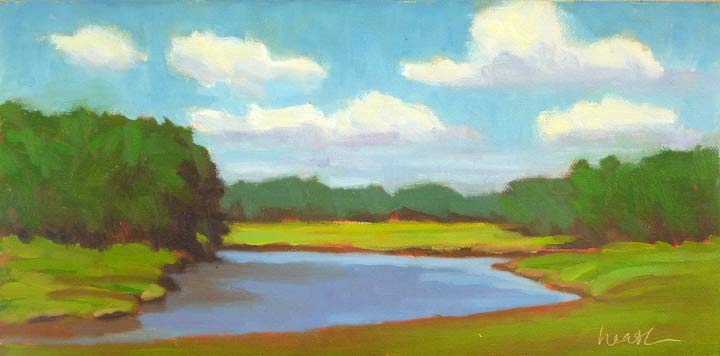
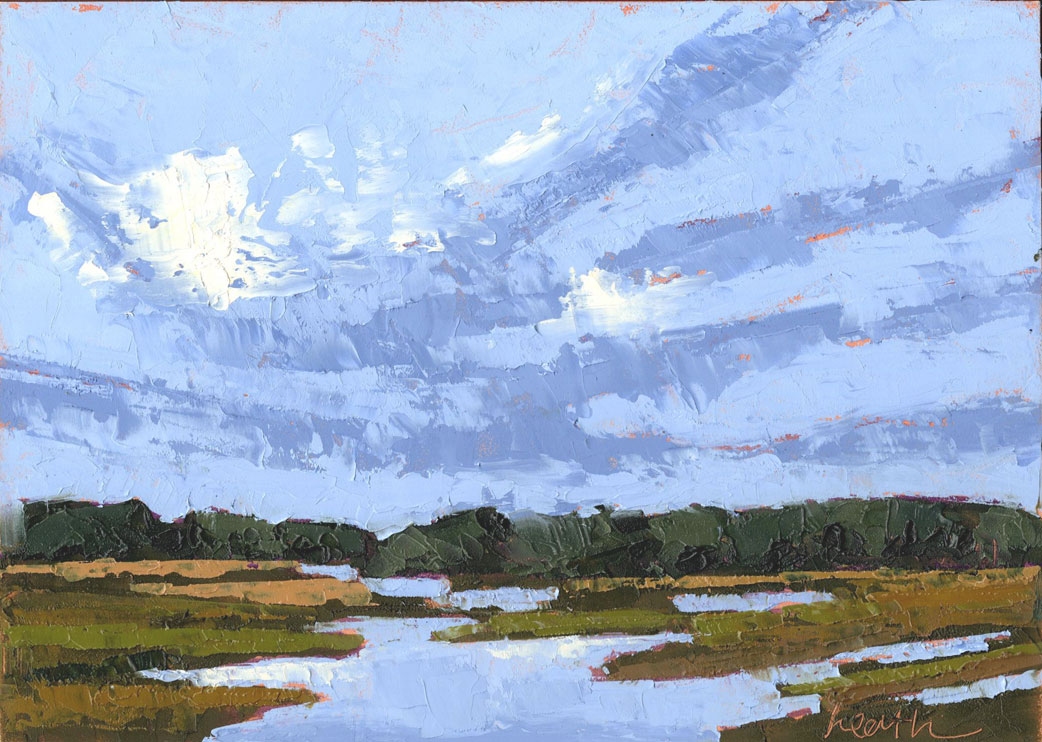
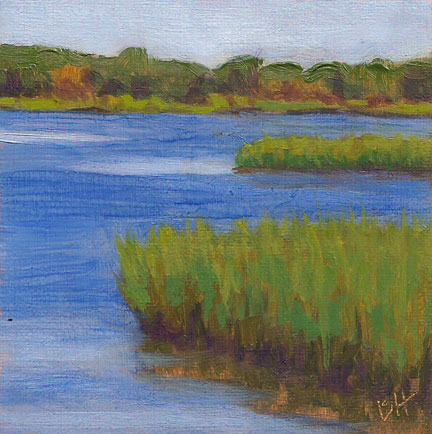
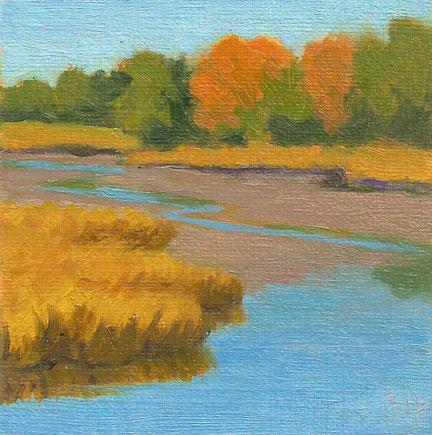

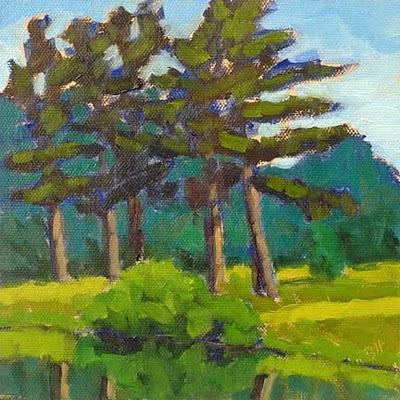
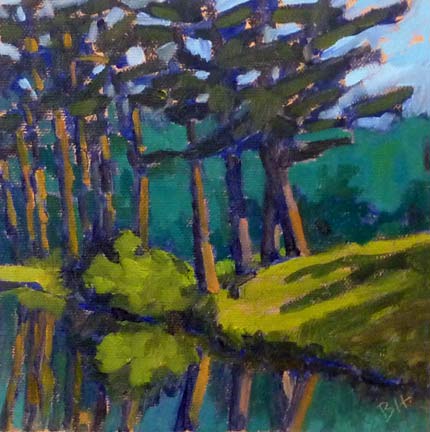
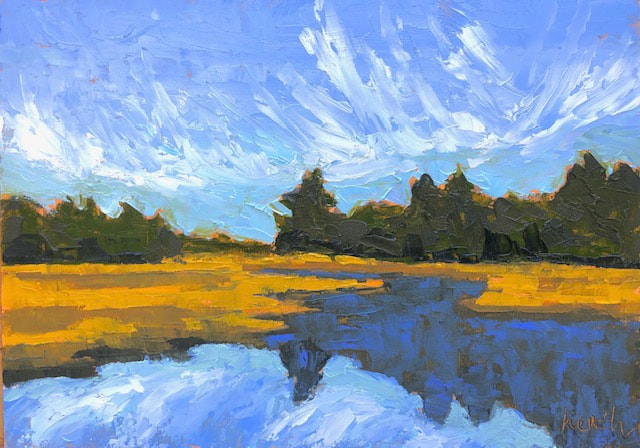
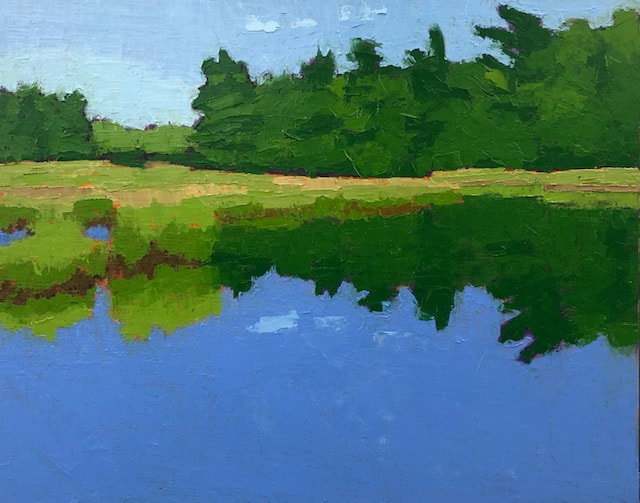
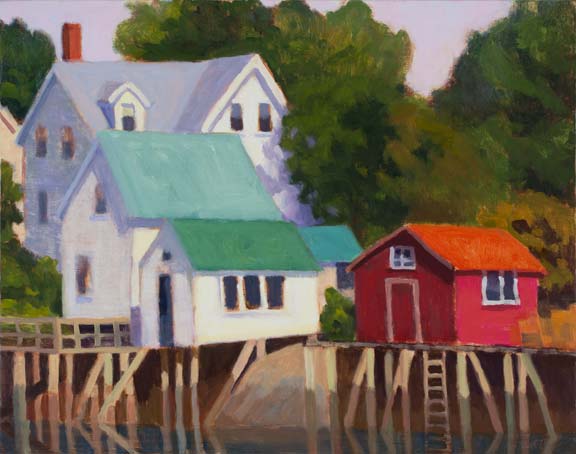
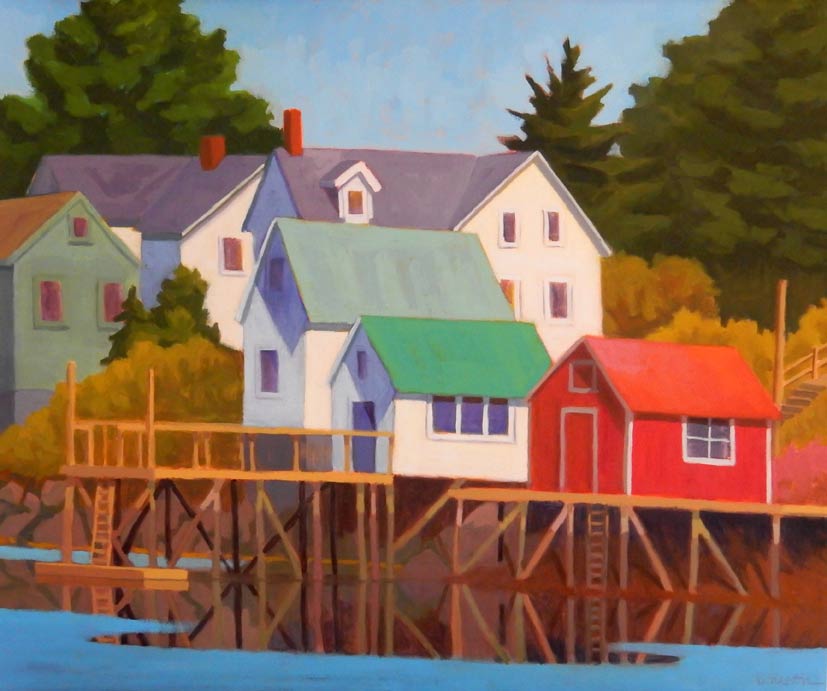
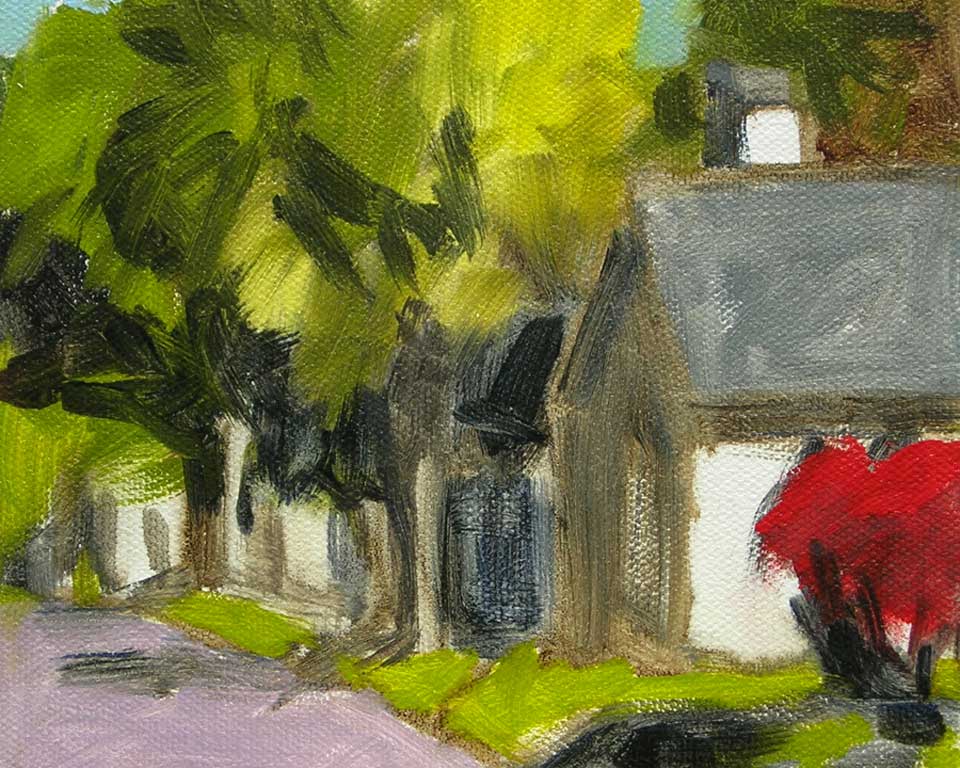
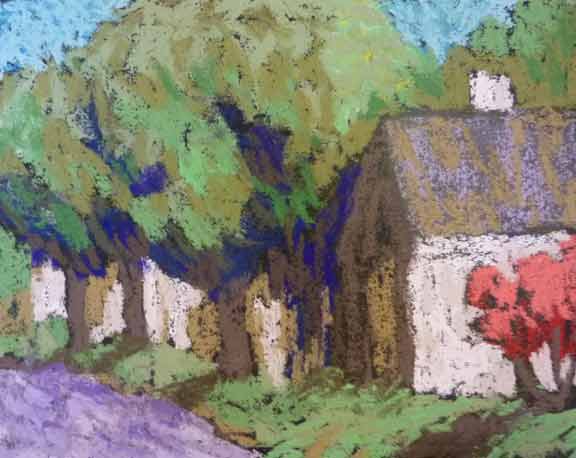
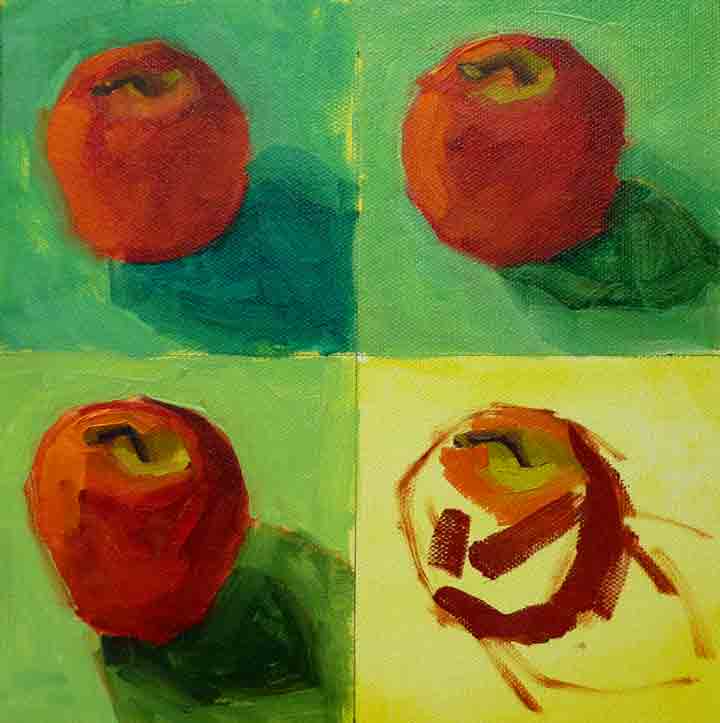
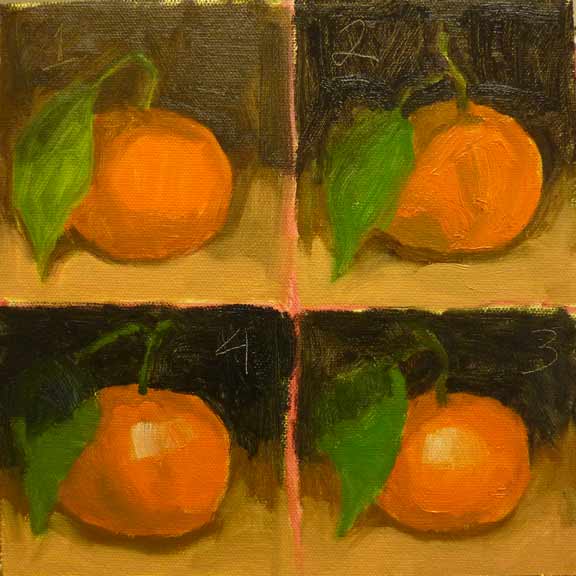
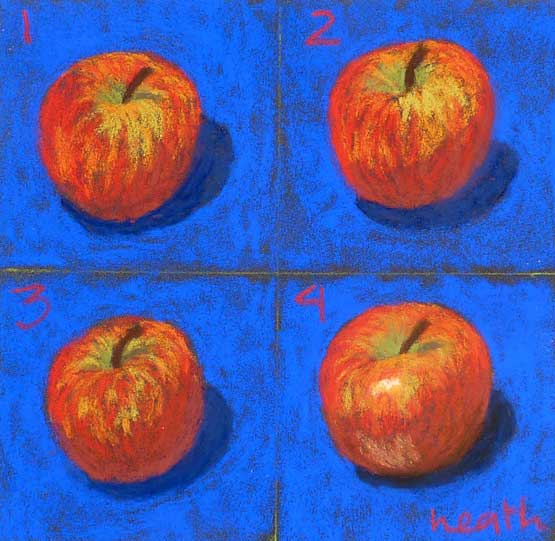
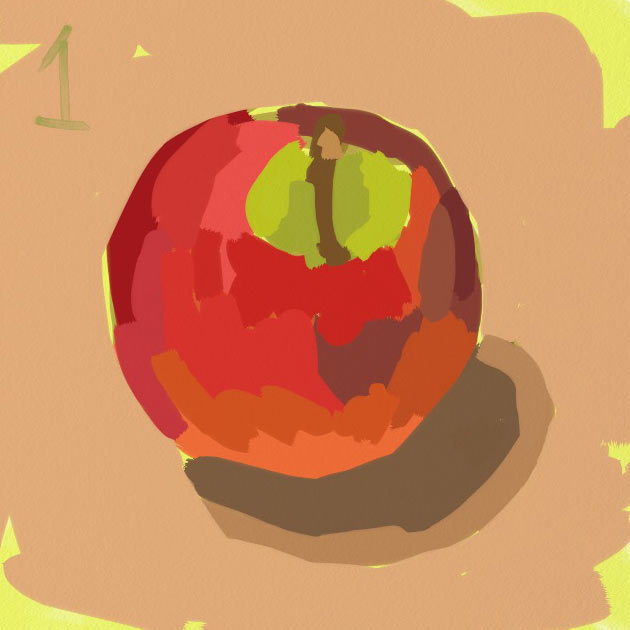
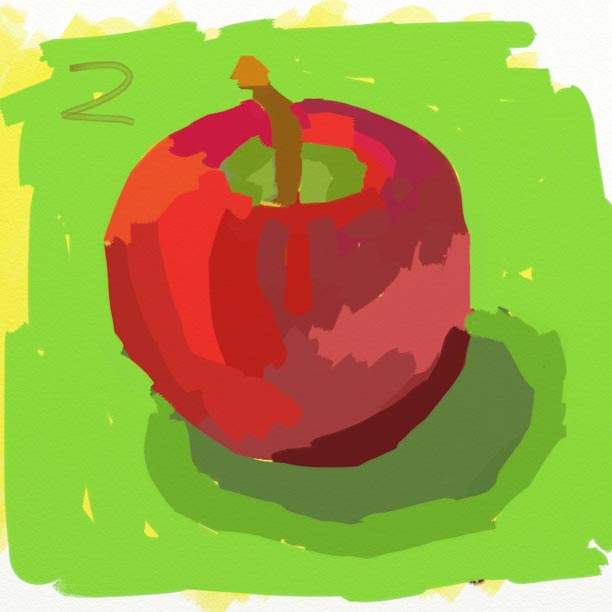
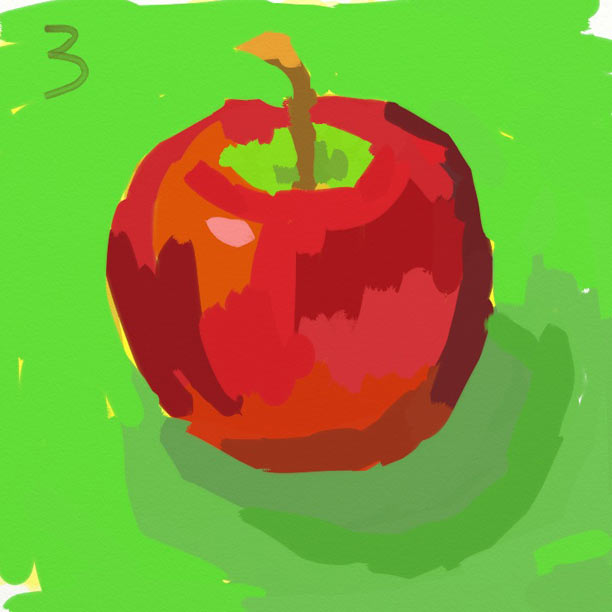
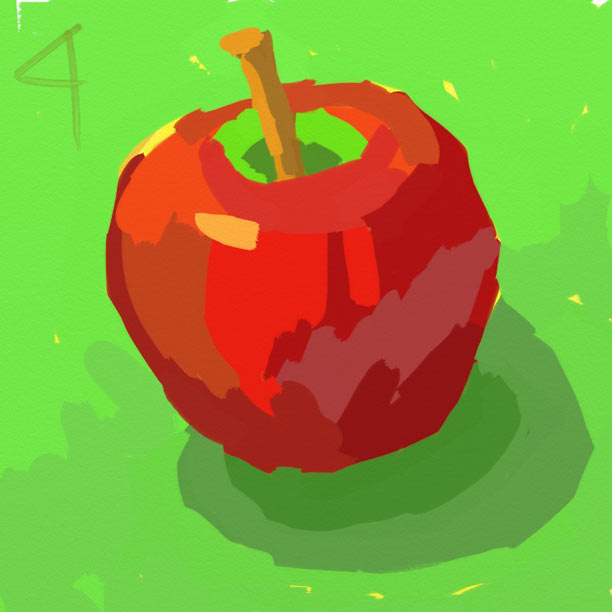
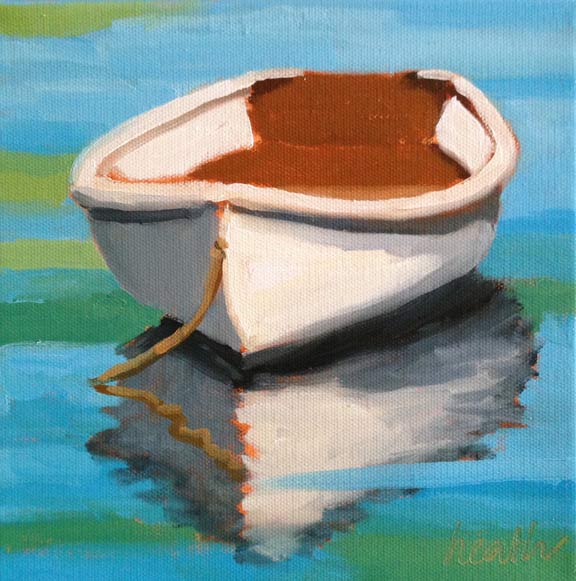

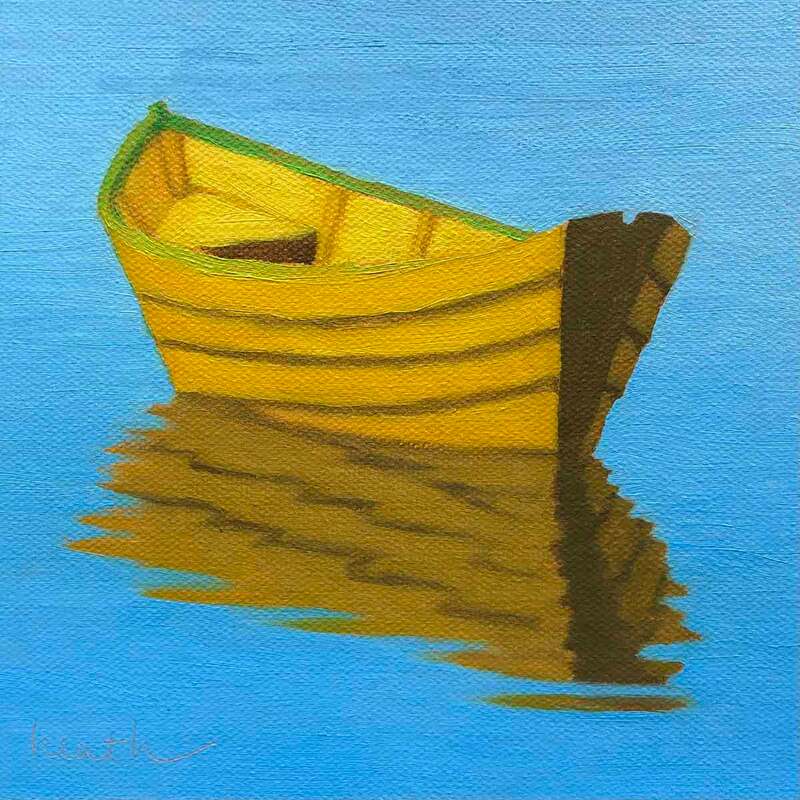
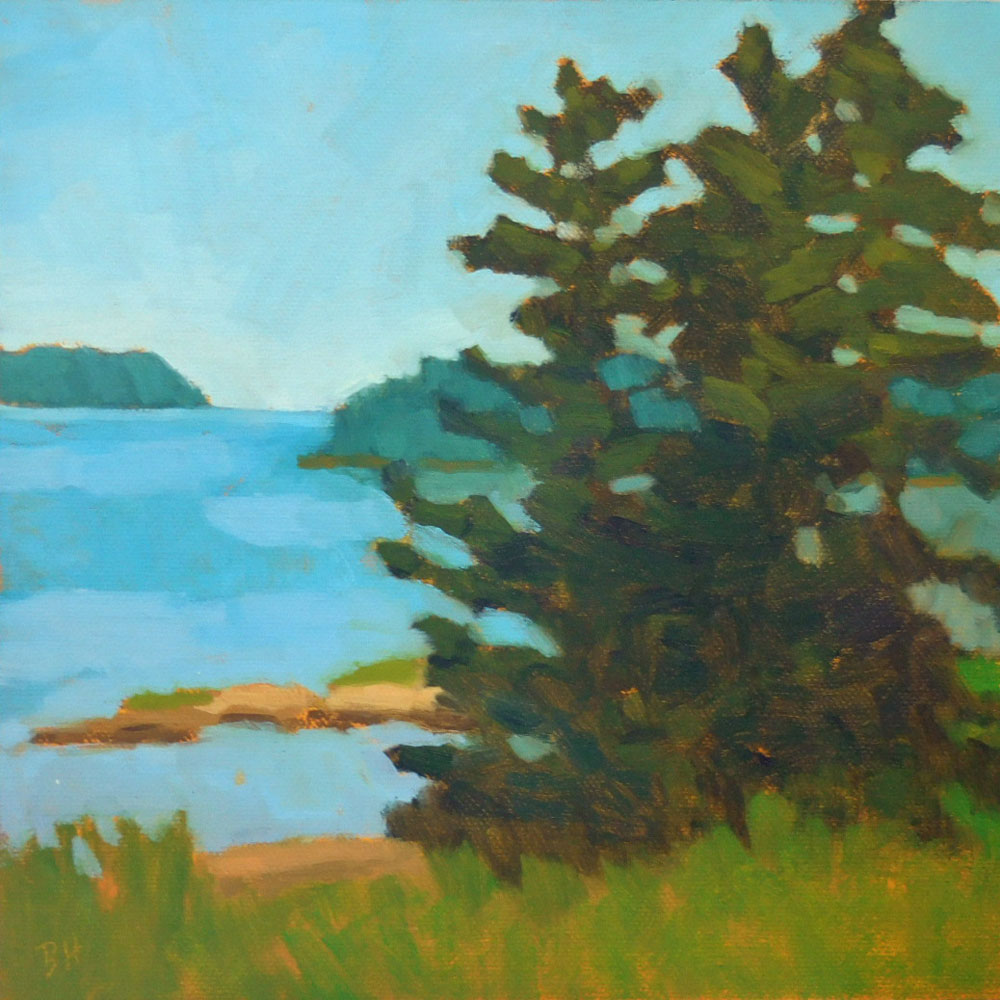
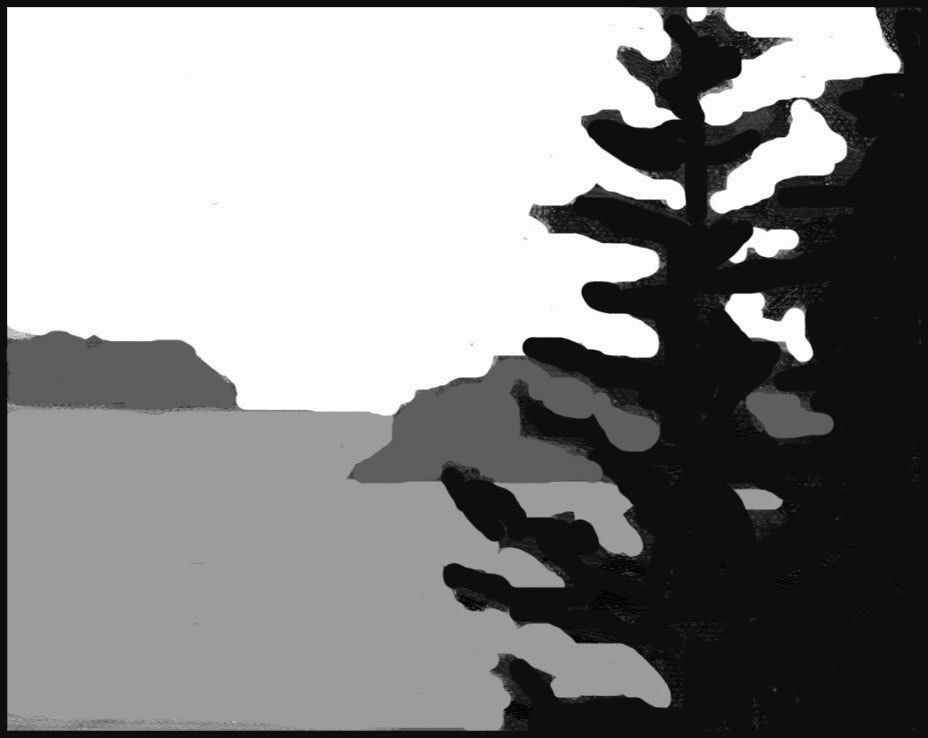
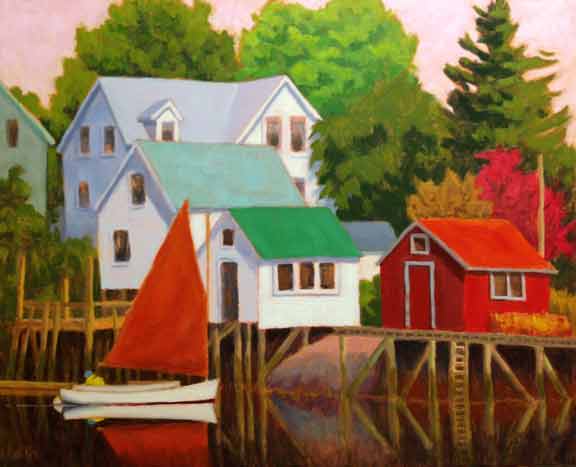
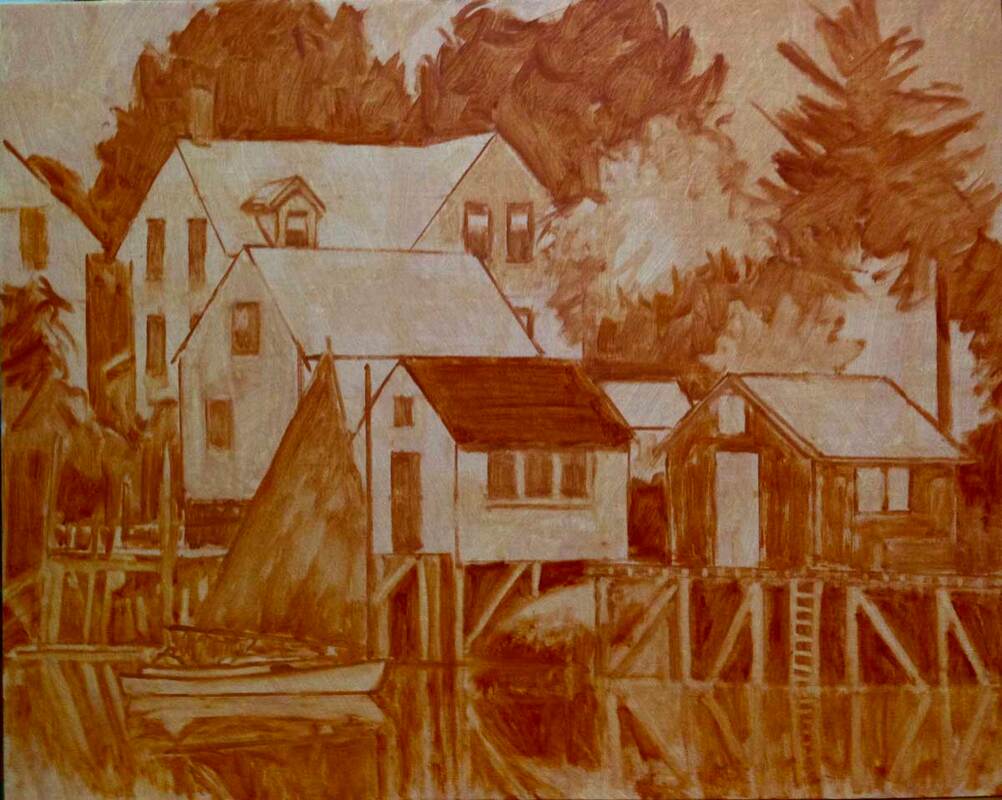
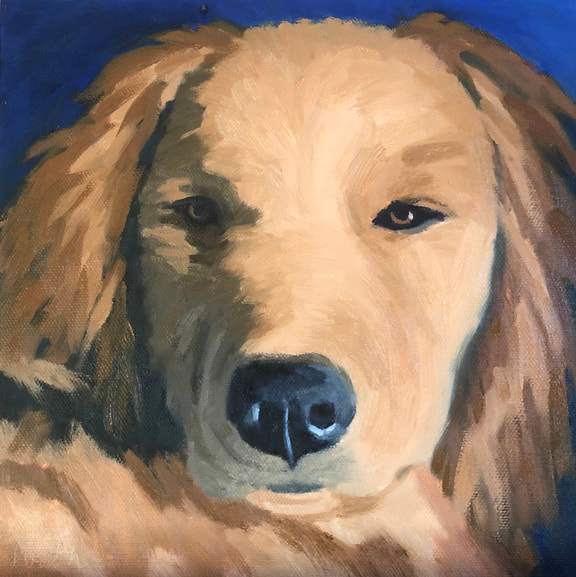
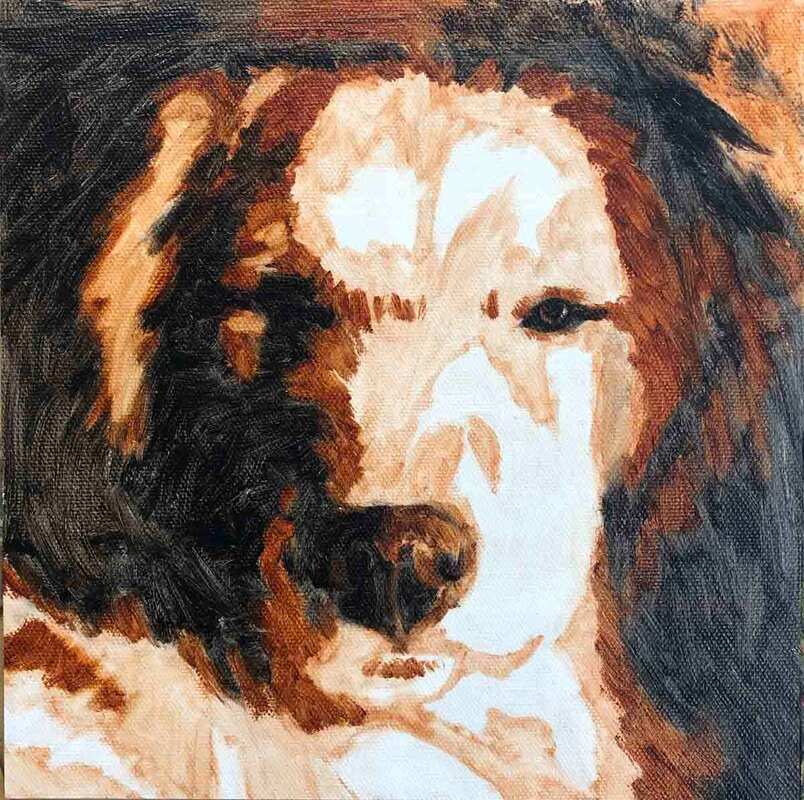
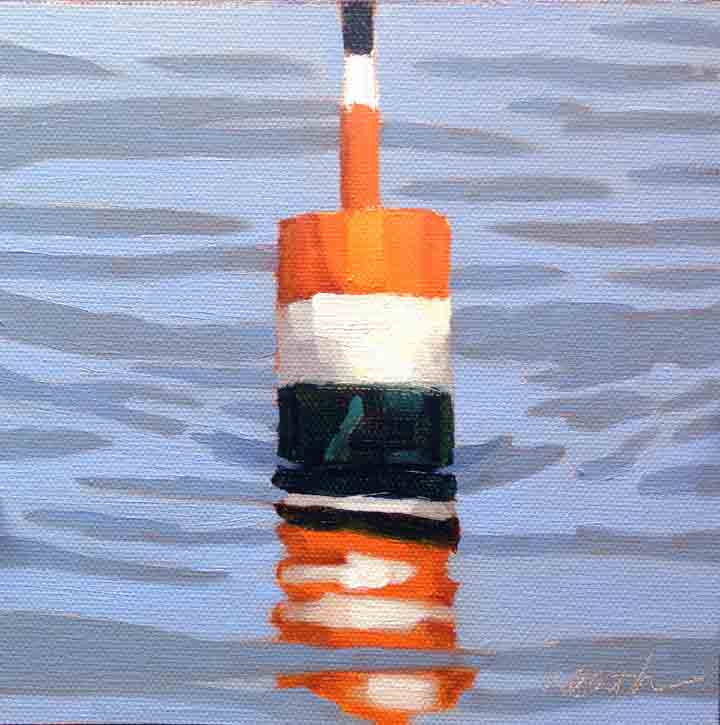
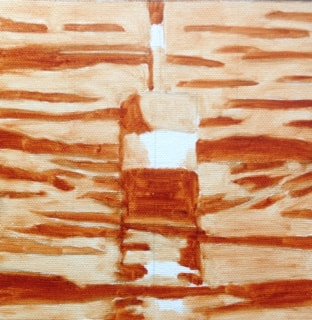
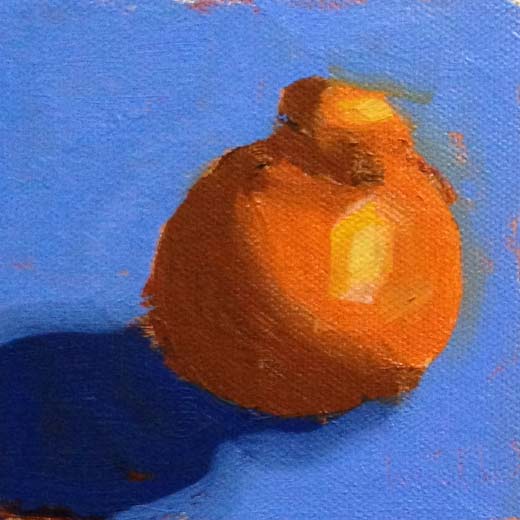
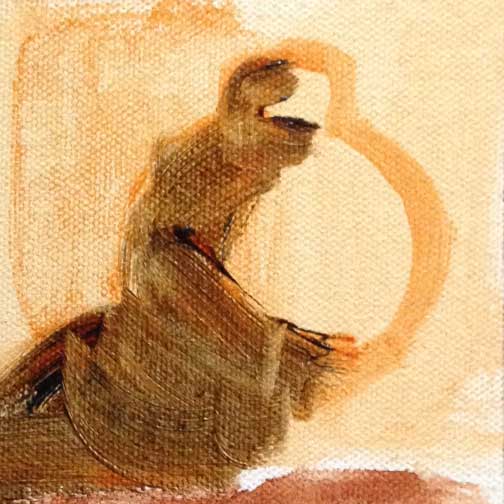
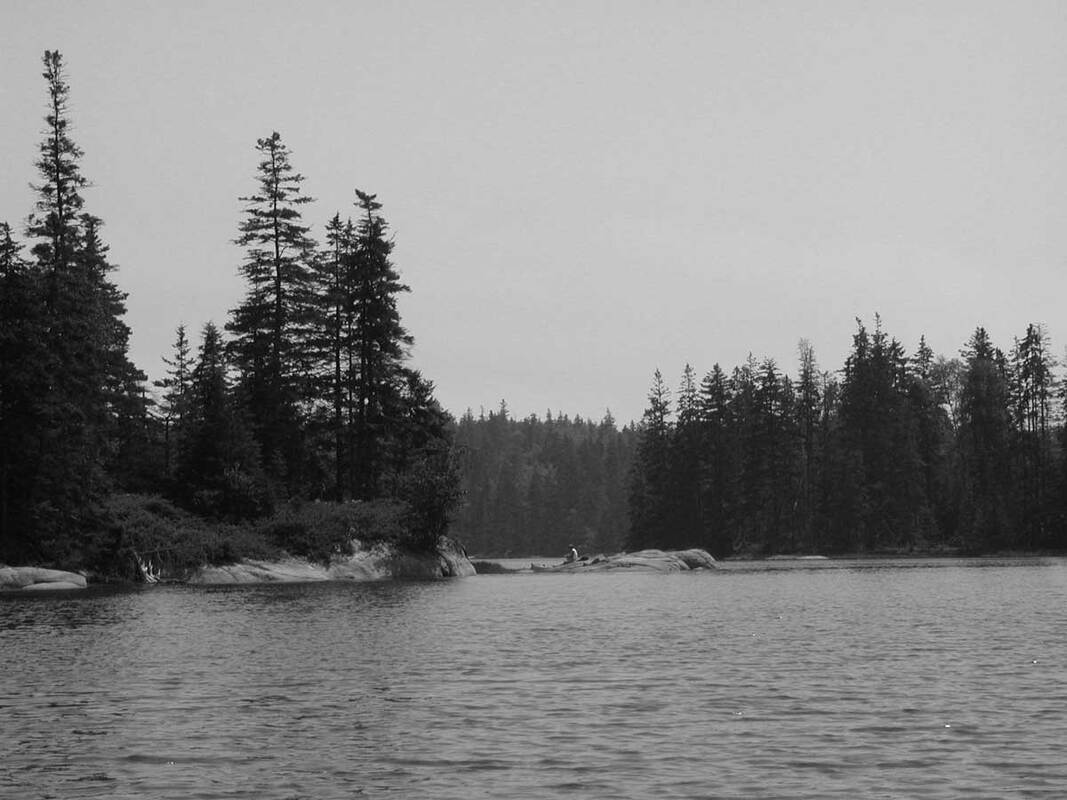
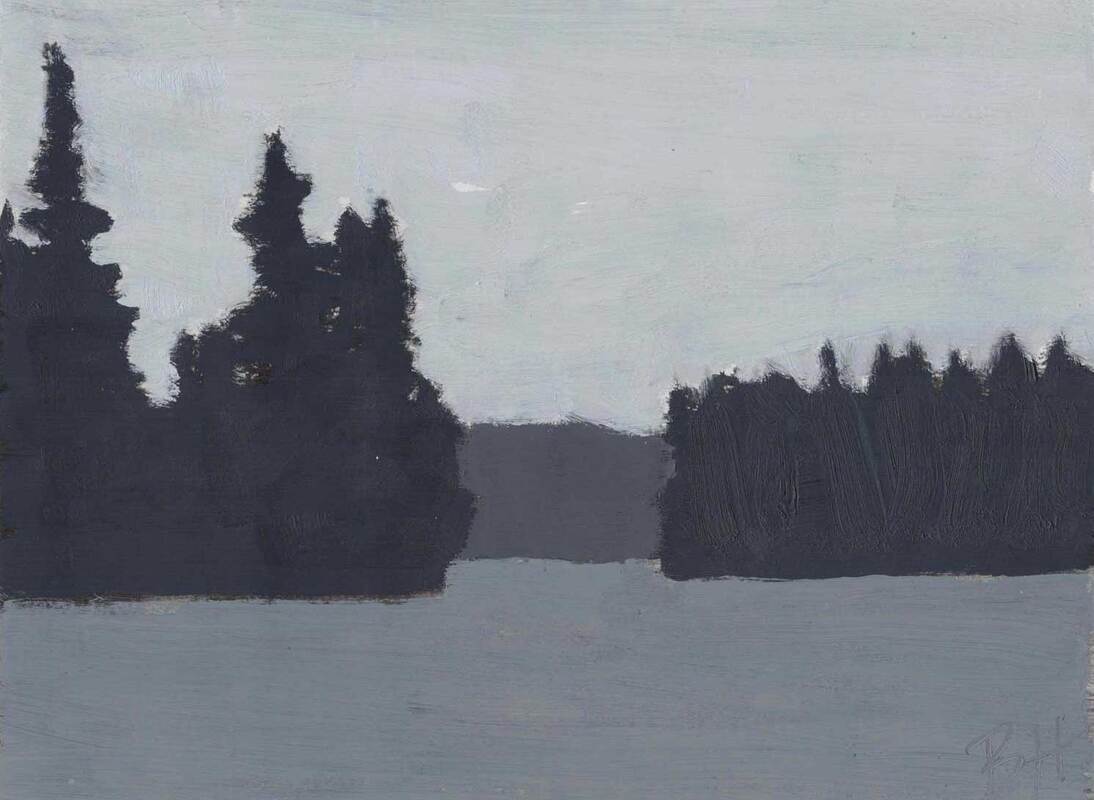
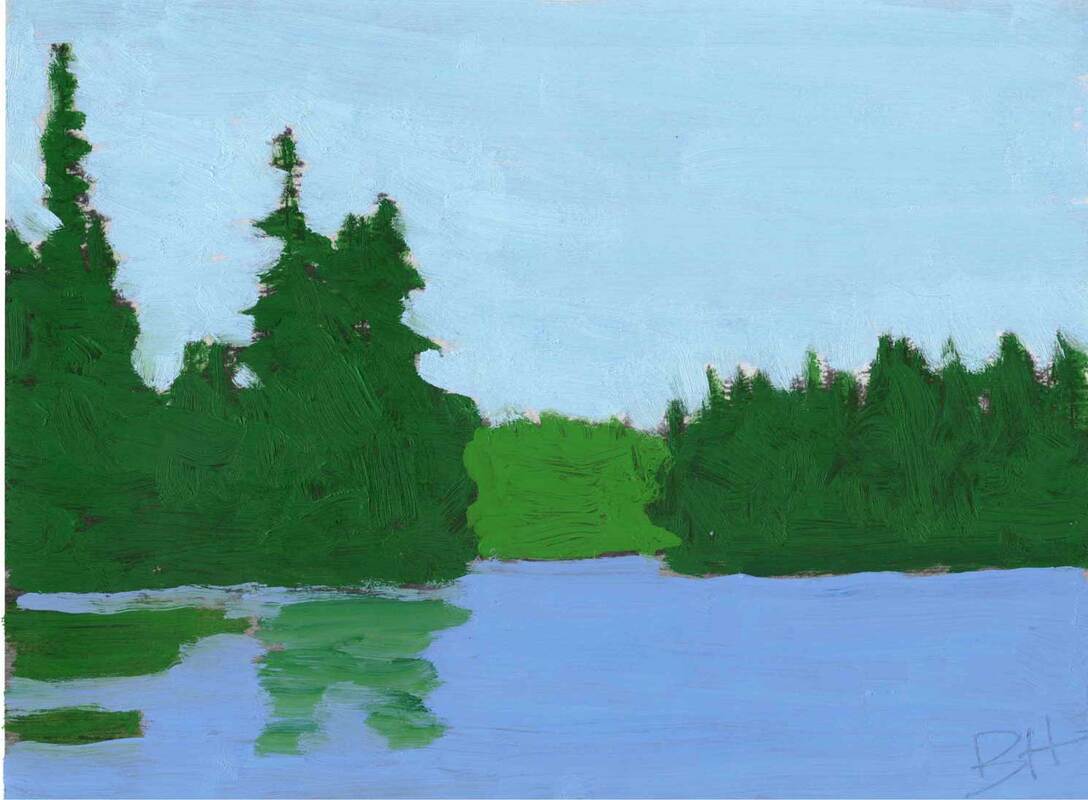
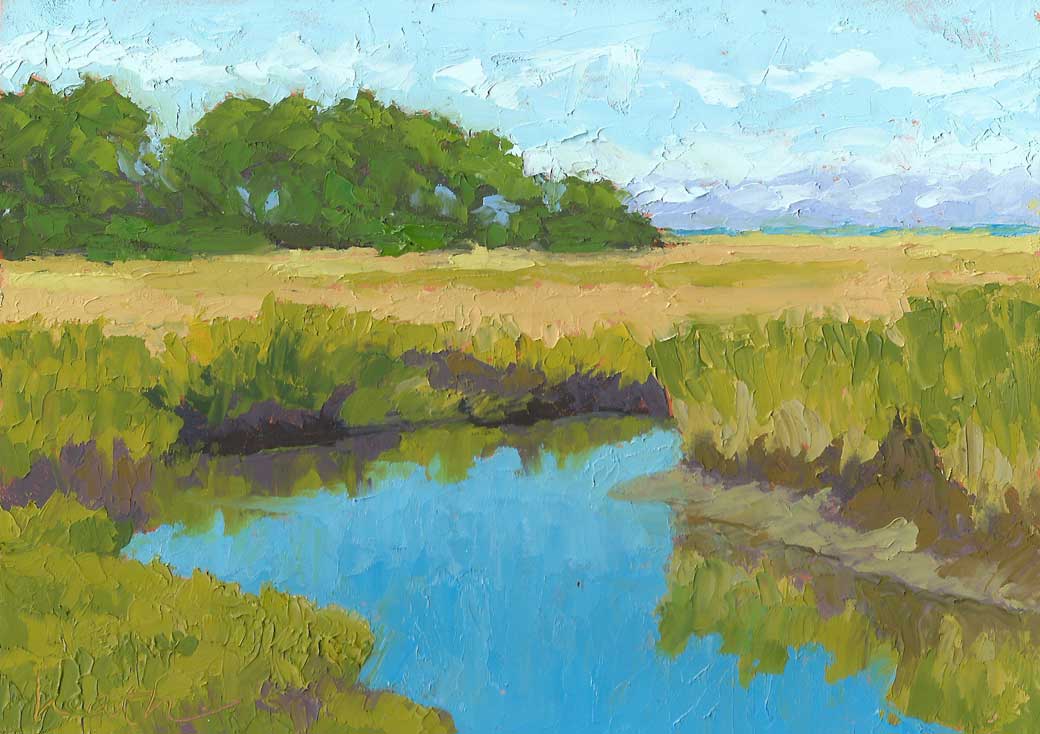
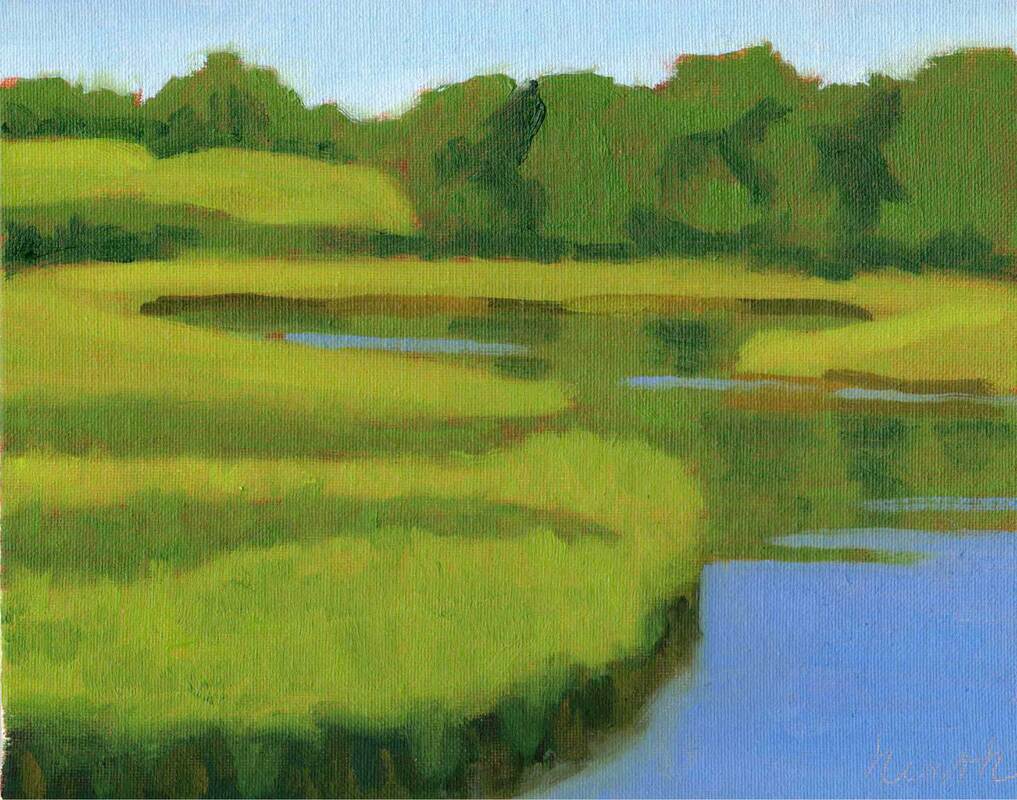
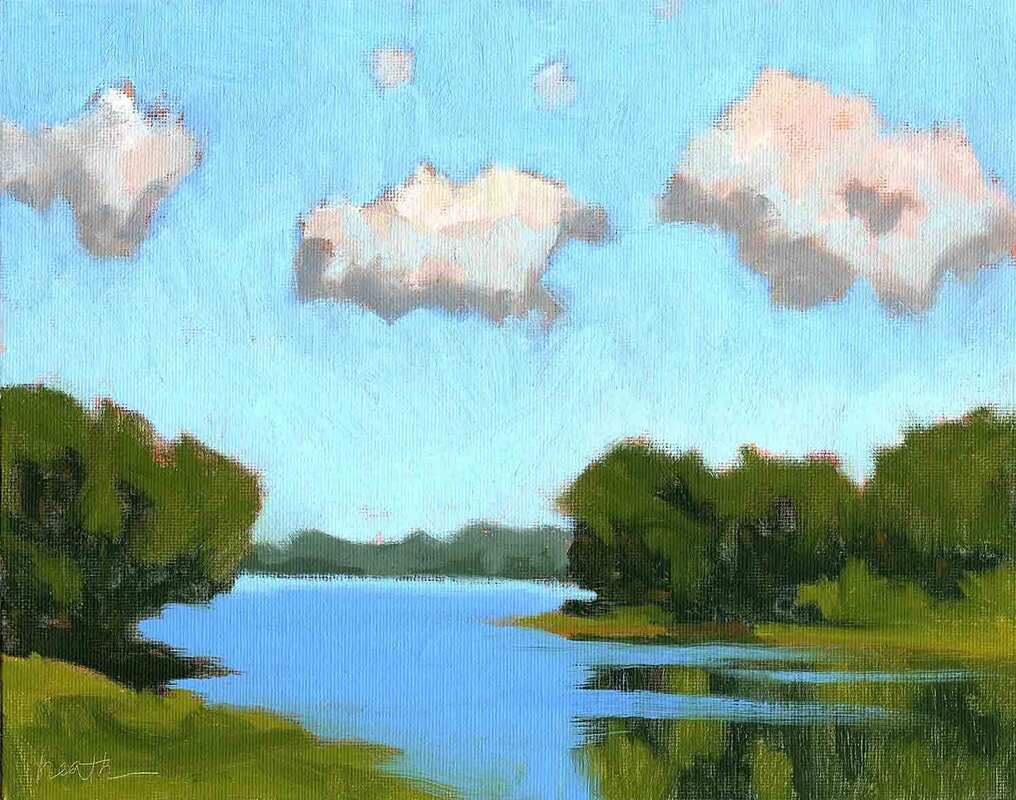
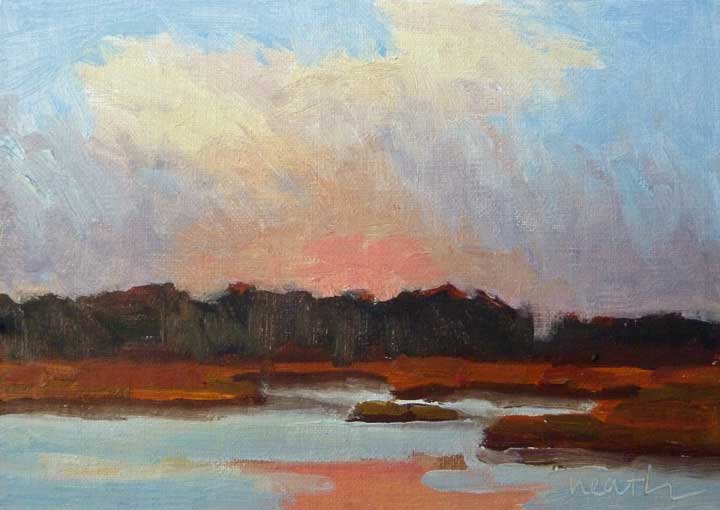
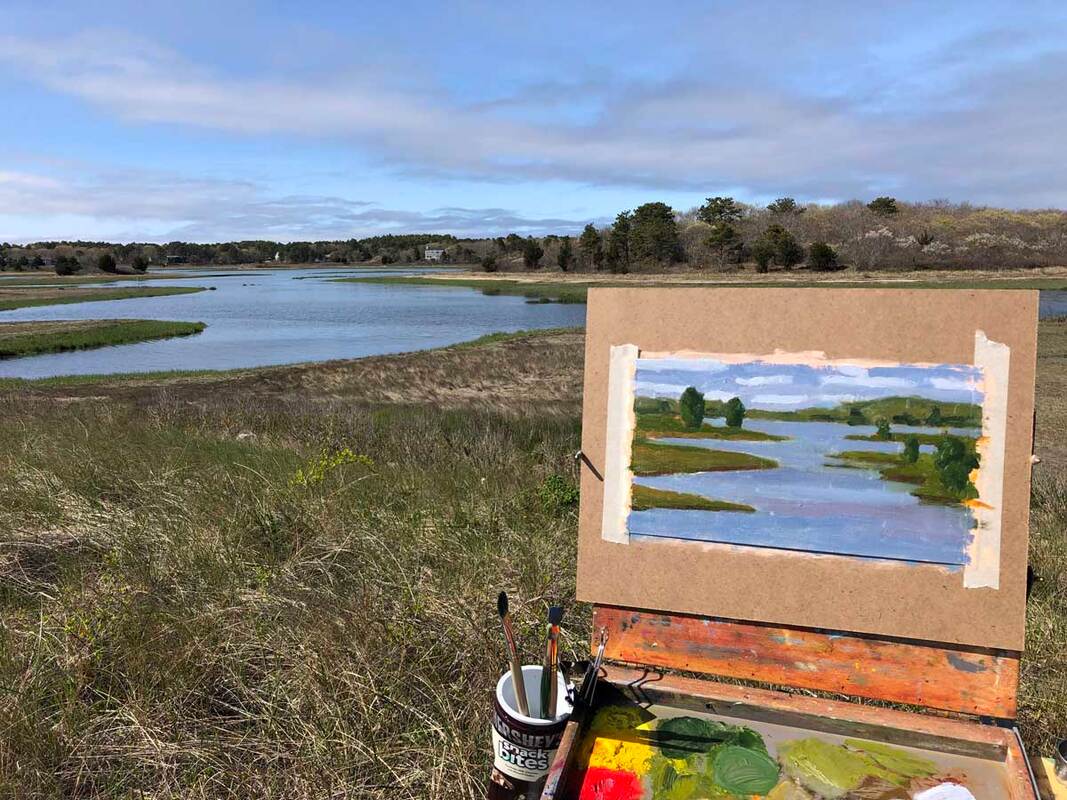
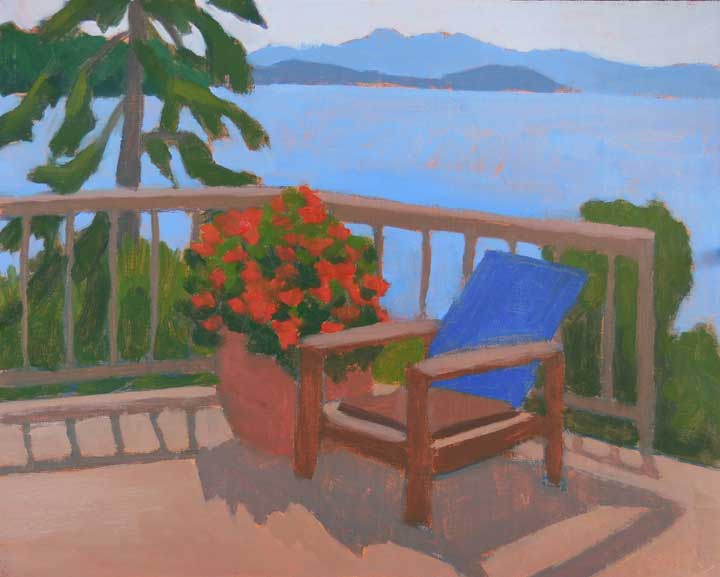
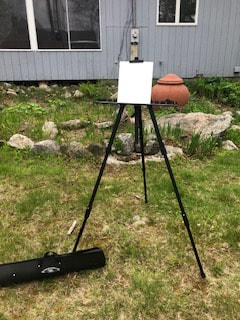
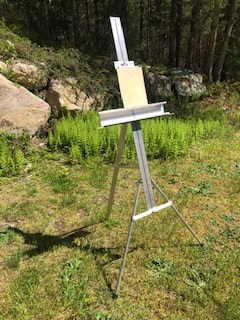
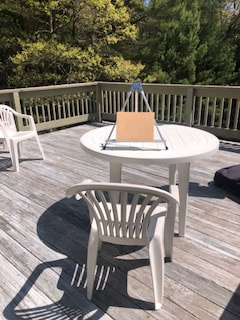
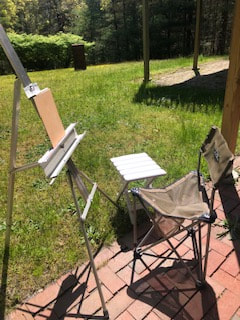
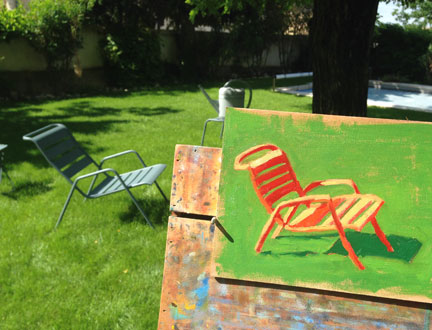
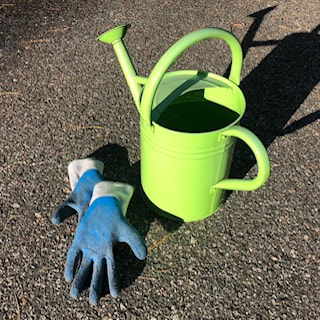
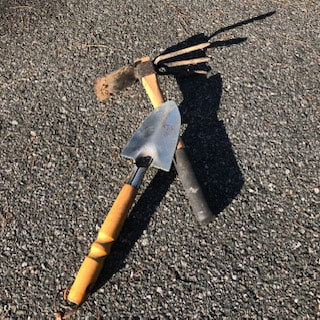
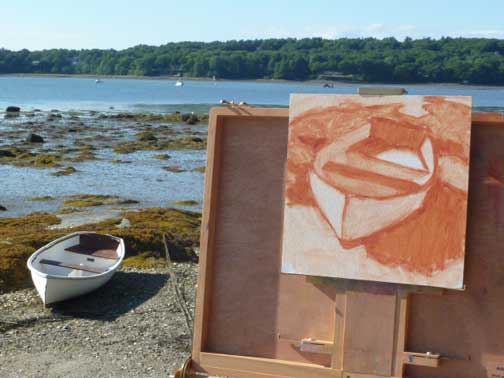
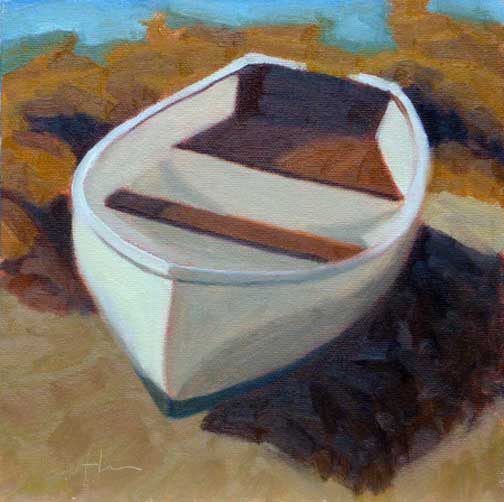
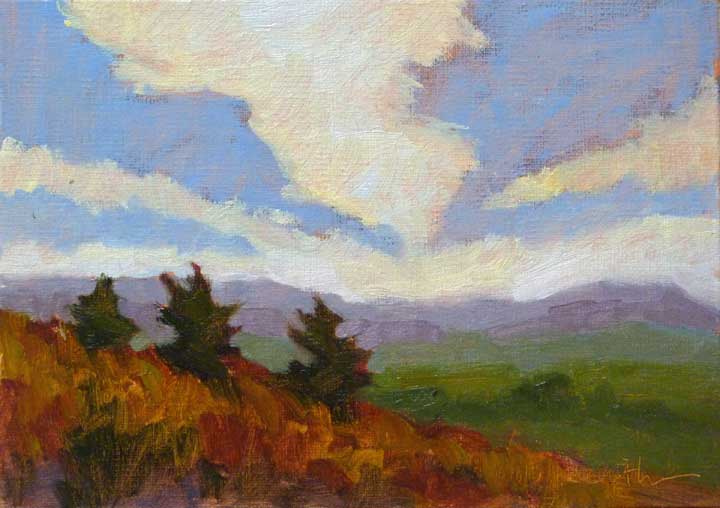
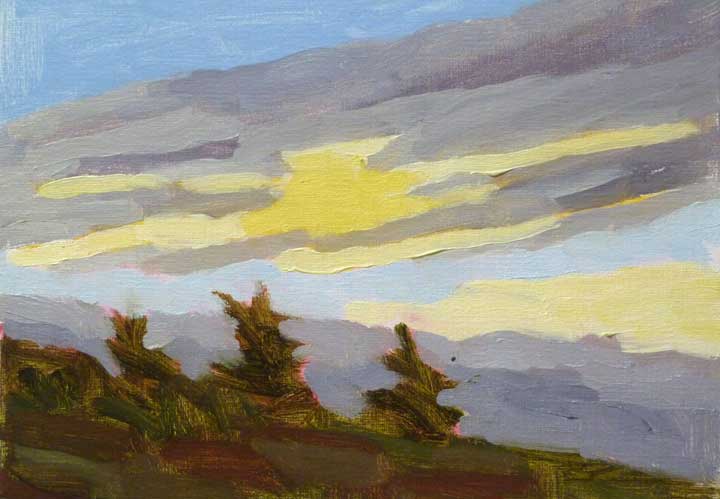
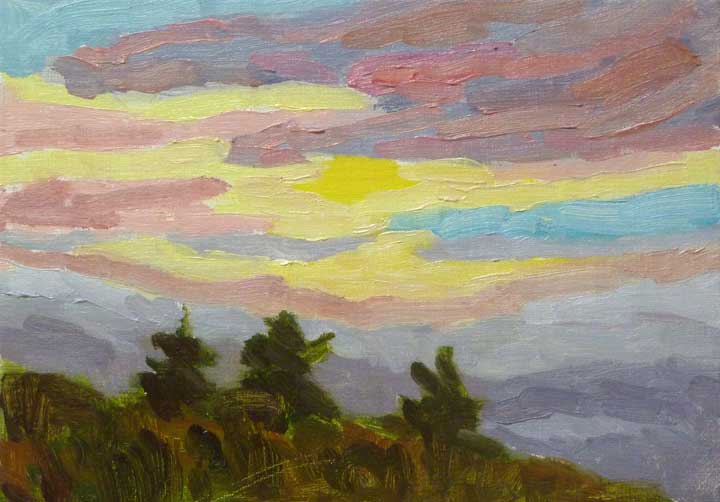
 RSS Feed
RSS Feed